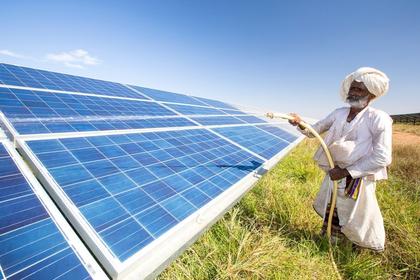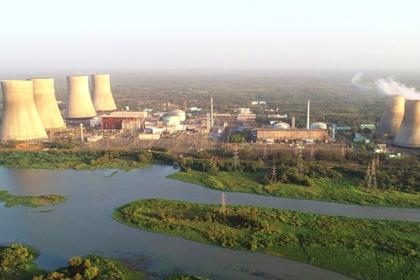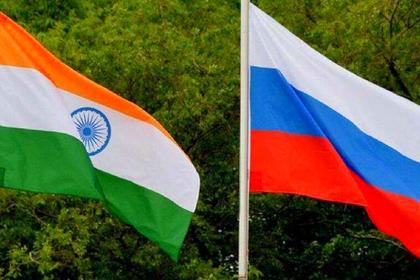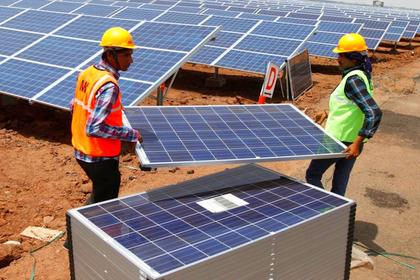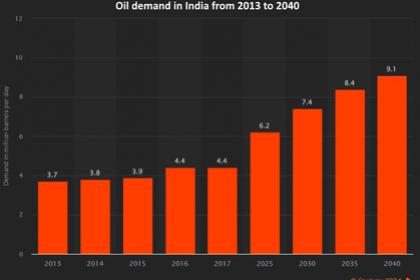
INDIA'S ENERGY TRANSITION
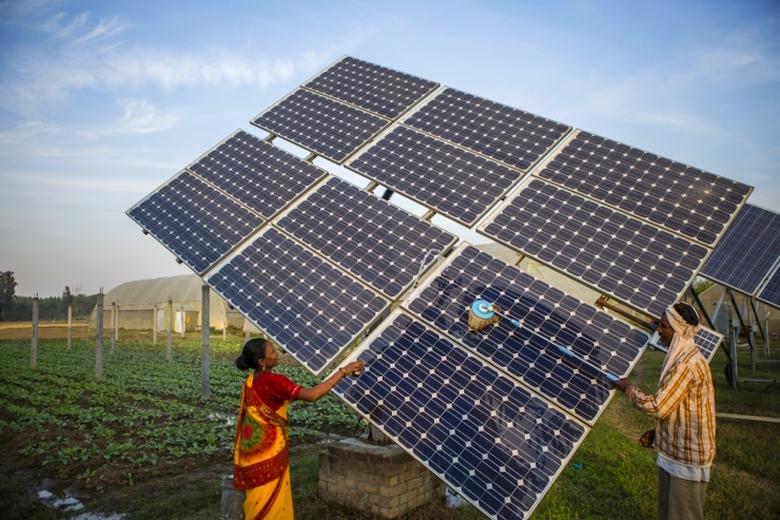
By A. K. Shyam, PhD Assessor, Freelance Consultant
ENERGYCENTRAL- Sep 30, 2024 - ‘Carbon neutrality’ has become the key word to so many countries – China and Korea aiming it by 2060 and 2050 respectively with Japan following it by 2050. European Union along with East-Asian economies lead climate efforts in terms of long-term ambitions and a closer look at energy transition and climate policies reveal another potential leader – India. India, one of the fastest growing economies is indispensable to a sustainable and climate neutral economy. Though not in the net-zero clubs, India is on the path compatible with 20C climate scenario. India, in fact is stretched between decarbonisation and renewable generation with its infrastructural and regulatory inability to face the potential.
INDIAN POWER SECTOR
The diversified Indian power sector generates power from both conventional and non-conventional sources with an installed capacity of 401.01 GW. India is fourth in wind power, fifth in solar power and fourth in renewable power installed capacity projecting the sustainable development practice. India needs to build 817 GW of generation capacity by 2030 in tune with Cop26 commitment with 500 GW from non-fossil fuel sources – Non-fossil fuel added 167.7 GW out of the total 403.7 GW in 2022.
While the benefits of non-fossil fuel are evident, variability poses challenge to grid integration especially Frequency Control and Ancillary Services (FCAS) which support grid operation (grid’s power quality, reliability and security). The growth of renewable speaks on the health of DISCOMS which are in deep debt – unable to pay or delayed payments. In order to iron out this predicament, Revamped Distribution Sector Scheme (RDSS) based on result-linked scheme to develop a state-wise tailor made approach. This promotes technical and commercial losses through appropriate billing and collection efficiency which are indeed critical.
Automation and smart metering play a vital role towards a positive transformation across distribution sector in improving cash flow of distribution utilities and help achieve financial turnaround.
Indian power sector is slated to rise 2.2 times between 2024 and 2030 to sustain economic growth as the power consumption is expected to grow more than 7% annually. The total power generation capacity needs to increase from 442 GW (2024) to 673 GW to meet the growing demand for power. The average Plant Load Factor (PLF) currently at 65-70 is expected to rise to 74% in 2025. In order to achieve this target and accelerating capacity additions, addressing regular power shortages through investment in power transmission and distribution need be focussed.
NATIONAL ELECTRICITY POLICY
National Electricity Policy in compliance with section 3 of the Electricity Act 2003 provides the base for power reforms in the country. Electricity being the key driver for rapid economic growth and poverty alleviation sets the target of providing access to all households. The demand for power has been outstripping the availability due to substantial peak and energy shortage which is a resultant of inadequacies in generation, transmission & distribution clubbed with inefficient use of electricity. Lack of commercial approach in management of utilities is the major hurdle due to unsustainable financial operations.
The primary objective of the National Electricity Policy is to prepare periodic update including tariff in consultation with State Governments and Authority of power development considering optimal utilization of resources of energy available. The objectives of this policy are: access to electricity; availability of power; supply of reliable and quality power in an efficient manner and at reasonable rates; increase per capita availability; financial turnaround and commercial viability and protecting consumer’s interest.
Periodic demand assessment is a crucial exercise for capacity addition planning which provides formulation of short-term and perspective plans for electricity system development and coordinating activities of planning agencies for optimal utilization of resources. National Electricity Plan is for a short-term framework of five years while perspective plan would be for 15 years. While planning such framework, Central Electricity Authority (CEA) consults all stakeholders including state governments. State governments would execute a similar exercise with stakeholders including distribution licensees and STUs.
Such policies address many aspects starting with rural electrification, generation, transmission & Distribution to name a few. Thermal generation specifically addresses nuclear power, non-conventional energy sources, renovation and Modernization and captive generation. Transmission and distribution gets priority in addition to generation. While these are crucial aspects technology development and R & D has a special attention especially with reference to non-conventional energy systems. Energy conservation, environmental issues, training and human resource development play a major role for periodic update.
INDIA TOWARDS DECARBONIZATION
Nationally Determined Contribution (NDC) determines 40% non-fossil share by 2030 has been nearly met. This was possible largely due to massive reforms including several incentives for renewable energy resources. The introduction of national power exchange platform has enhanced access to electricity from 67.6% to almost 95% with greater emphasis to electrify rural areas. While this is indeed encouraging, it is the quality of energy services that is worth looking at.
The quality of access to electricity is lower in rural areas and in a few; it is insufficient as some of them prefer not to use available services due to erratic electric supply. One has to perhaps change the definition of village electrified from 10% households and public buildings to a more meaningful exercise. The primary reason for this could be due to ‘DISCOMS’ considered being debt holes unable to operate efficiently due to their own cost (out-dated and poor billing system), power loss and theft. State owned DISCOMS are dependent on subsidies; power supply interruptions clubbed with high retail power prices undermine the trust of the consumers. More recent to add is inability to integrate renewables into the national power system. State owned DISCOMS rely on long-term power purchase agreements with coal-based power generation and reluctance to by renewable fearing additional financial burden.
‘Make in India’ campaign aims to reduce India’s dependency on Chinese imports while also transforming into global manufacturing centre. Renewable equipment is not the only relevant sector for energy transition but also the race for geo-economic and geopolitical leadership. Re-orientation of energy and climate policy in the light of global development further motivates them to surge ahead in domestic performance.
ENERGY TRANSITION - CHALLENGES
Transition away from fossil fuels today is at a crucial juncture after almost a decade of Paris Agreement as it is just halfway through this decisive decade of climate change. As could be seen, climate targets announced by governments and companies bank on translating into action on both deployment and adoption of critical but interrelated technologies – Renewable energy sources; electrification technologies (EVs); heat pumps as well as carbon capture, utilization and storage; hydrogen and sustainable fuels.
Each one of them aims at decarbonisation in an effort to reduce greenhouse gas emissions and it is interesting to watch the change between 2030 and 2050 targets by countries and companies. While every country has been banking on the renewables (solar and wind in particular), the scale of deployment does not seem as fast as is needed to reach even 2030 targets – material/labour shortages clubbed with permitting procedures are stumbling blocks. There seem to be inherent weaknesses in firstly, economic returns and policy predictability which often remains weak. Secondly, many technologies do not seem cost-competitive and finally, the technologies have not been tested at scale creating a doubt on their effectiveness and efficiency. Further, technology focus fails to address macroeconomic shocks and geopolitics.
That means, innovation and policy resets are warranted for the increasing number of country and company net-zero commitments and move projects to final investment decision. Although this could be more specific to Europe and United States which project explicit 2030 targets, it is indeed a learning exercise for other countries. One thing emerges clear and loud and that is policy alone may not be enough to overcome converging factors affecting progress.
It is therefore amply clear that a revaluation of the current strategies in tune with changing global conditions may be certainly necessary – many decarbonisation strategies perhaps assumed a different economic and policy landscape than the one exists today. It is thus evident portfolio strategies revisions and de-risking critical developments could be better to iron out uncertainties and ensuring sustained growth towards climate goals.
CONCLUSION:
While India is progressing well towards their net-zero targets by 2070, it is expected to reach an upper-middle-income status by 2030s according to a recent report. The recent report indicates a comprehensive plan worth around 9 lakh crores at amplifying the nation’s power grid and enhancing energy security. This ambitious framework to scale transmission network and capacity is to meet projected peak demand of 458 GW by 2032. The aim is also to triple the renewable energy capacity to around 500 GW supported by both federal and state-level agencies.
-----
This thought leadership article was originally shared with Energy Central's Energy Collective Group. The communities are a place where professionals in the power industry can share, learn and connect in a collaborative environment. Join the Energy Collective Group today and learn from others who work in the industry.
-----
Earlier:

